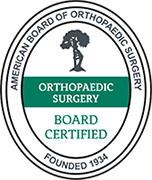
What is Charcot Foot Reconstruction?
Charcot foot reconstruction is a surgery performed to repair damage to the bones, ligaments, tendons and other structures in a foot affected by a condition called Charcot foot, which is characterized by loss of sensation in the foot.
Significance of Charcot Foot Reconstruction
Charcot foot also called “neuropathic osteoarthropathy”, is a serious condition that can result in severe infection, deformity, and disability. The condition occurs due to nerve damage (neuropathy) and numbness in the foot, a complication mostly caused by diabetes. Reconstruction surgery can help recreate the foot and make it more stable and functional.
Indications for Charcot Foot Reconstruction
Charcot foot reconstruction is recommended if you experience any of the following:
- Soft and weakened bones in the foot, painful sores or ulcers that do not heal
- The unusual shape of the foot (such as rocker-bottom appearance), curling of toes
- Fracture of bones, collapse or dislocation of joints, or unstable joints in the foot
- Severe rigidity of the foot making braces, splints or other orthotics difficult to use
Preparing for Charcot Foot Reconstruction Surgery
A few days before the surgery, your doctor will conduct a thorough medical examination to ensure you are physically fit and have no underlying medical issues. You may also be told to:
- Discontinue any medicines if they may affect the surgical outcome
- Stop smoking/drinking alcohol
- Arrange for someone to drive back home after the surgery
- Fast after midnight the night before the surgery
CharcotFoot Reconstruction Procedure
Charcot foot reconstruction procedure is usually performed on an outpatient basis under general anesthesia. That means you will go home the same day or after an overnight stay in the hospital.
During the surgery:
- An incision is made at the side or in the middle along the foot as required.
- Using special surgical tools, the damaged or dead tissue as well as the underlying damaged bone is incised and taken out.
- The affected bone is either shortened by cutting it or lengthened by adding a bone graft as necessary.
- Any bony prominence (sharp bones that cut into your skin and caused sores) is smoothed or removed by shaving it off.
- The bones are then repositioned or fused as needed and hardware such as screws or plates are placed across joints to provide added stability.
- The incision is closed with sutures and a soft dressing pad is applied. A cast or a splint may be placed to prevent movement of the foot.
The surgery may take three to six hours depending on the extent of reconstruction.
Post Surgery Care
- Take pain medications or antibiotics as prescribed
- Change the wound dressing and wrap it as instructed by the doctor
- Start physical therapy rehabilitation as recommended by the doctor
- Adhere to non-weight bearing on the treated foot for at least 3 months or as instructed
- Avoid strenuous activities until the doctor tells you to resume them
- Closely observe for complications such as infection or fixation failure
- Stick to the recommended follow-up schedule to help assess your progress
Benefits of Charcot Foot Reconstruction
- Decreased risk of further breakdown of the foot
- Improved appearance and function of the foot
- Reduced or no pain in the foot and better quality of life
Possible Complications of Charcot Foot Reconstruction
As with any surgical procedure, there is a minimal risk of complications that may include:
- Infections
- Bleeding
- Nerve damage
- Improper bone healing
- Amputation (very rare)










